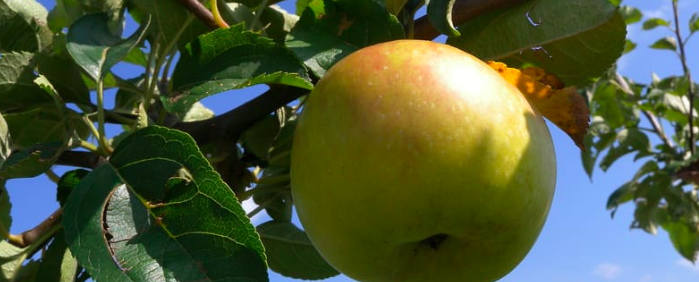
Why do you have to prune the fruit trees? Why do not you have to prune the fruit trees? How to do it ? When? We will also give you ways to make decisions after watching your plant.
By fruit trees, we speak here of the most common fruit trees such as apple, pear, cherry, plum, mirabelle plum, apricot, peach, fig , etc. Note that for cherry trees, size is often useless.
Many of you are asking about the size of fruit trees. In the gardening belief, pruning is regularly presented as indispensable, the panacea for getting fruits every year. Except that in practice we cross more often fruiters moribund because badly cut that valiant super-producers!
Why you have to prune.
Contrary to popular belief, cutting is not automatic! You have to have a clear intention when you decide to do it.
Here are the intentions sought by a gardener when pruning:
- Limit the number of flower buds to get less fruit , but bigger .
- Limit the height of the plant to facilitate harvesting.
- Eliminate old branches that will not produce anymore and those that have no future.
- Decrease the number of branches to keep only the most vigorous .
- Remove branches to lighten the foliage and thus bring in the light .
- Stress the plant to encourage it to reproduce.
Cut only when a problem has been identified or anticipated. If the tree is already producing properly, the size will not bring him anything.
The old pruning methods were very dirigiste, since they aimed to form the tree the first four years to give it a predefined form. It is better to let one keep one’s shape free, and to rectify small shooting errors than to practice severe sizes. It’s less work for us, and less traumatic for him.
What to look for if you have to cut, and what to do in each case?
There are two periods in which this question must be asked: at the end of winter, and after flowering.
Questions to ask yourself in winter:
- Does my plant have branches that cross, that are too tight, or dead? In this case it is necessary to cut a part of main branches, near the trunk.
- Is my plant too high , does it produce only wood and leaves? If so, then we must shorten the ends of all branches.
- Do I notice the presence of branches growing below the grafting point? They are gourmands who must be removed because they are not the right variety and will not fruit.
- Do I see very vertical branches that grow very fast? If so, it is better to remove them because they will use a lot of energy and produce nothing.
Questions to ask after the flowering period
- Has my plant bloomed anyway? Some years, because of weather the flowers can be quickly degraded, the pollination fails, and inevitably there will be no fruit. No need to cut in this case.
- Do I want to have bigger fruits, fewer? In this case, count the fruit buds per branch, and reduce the amount.
Good gestures!
Cutting a branch is not trivial for a tree or a shrub, it must be done in the right place, and on the “good” branches.
You may not know it, but trees and shrubs can close their wounds. They form a scar bead that reform the bark on the wound. Only, unlike us, the tissue capable of operating this healing is very localized. It is located in the immediate vicinity of the armpit of the branch. So always cut in this area.
Knowing this, here are some tips:
- Never cut a branch with a diameter exceeding 10 cm. It will take years for the scar tissue to cover the wound, leaving an entrance for the intruders.
- Do not rely on the effectiveness of sealants and other dressings. The tree will rather be embarrassed by their presence and can not close the wound.
The principles to keep in mind.
Experience tells us that some decisions should not be made too late. It is for example a pity to wait until you have a cluster of branches 5 cm in diameter all agglomerated in the heart of your tree before deciding to lighten it. Anticipate! Looking at your plant, think about how it will be in 5 years, when all its branches have grown several inches.
This may seem obvious to some, but it must be remembered that the branches are lengthened by their buds, not by their base. So, if you see today at the base of a tree or shrub a clutter of branches, it will not settle in time. They will not be miraculously spaced.
Finally, always think about the size that your tree or shrub reaches in its natural environment. If he will remain naturally small, it is useless to shorten his branches. Conversely, if he wants to become very tall, regularly shorten the branches in the first years.